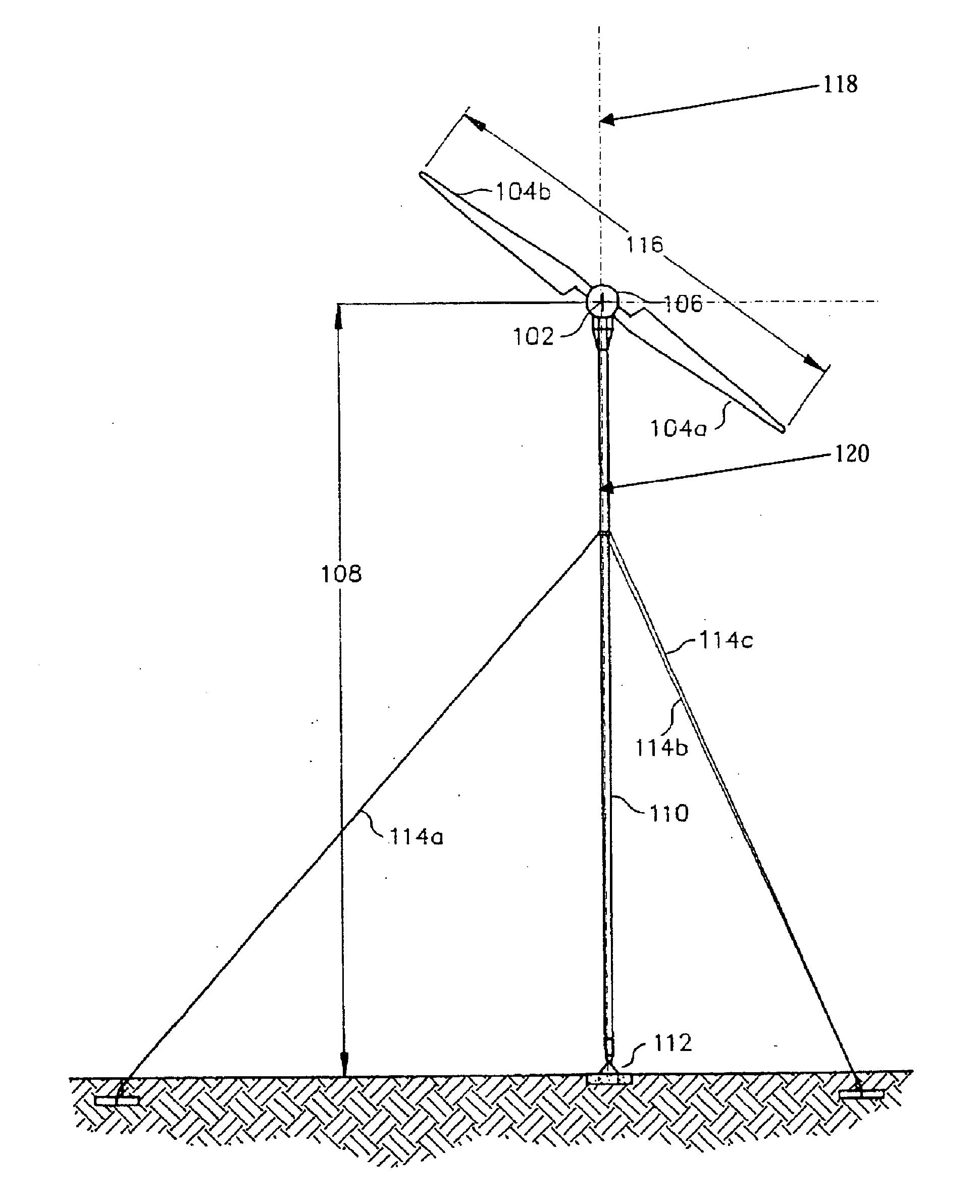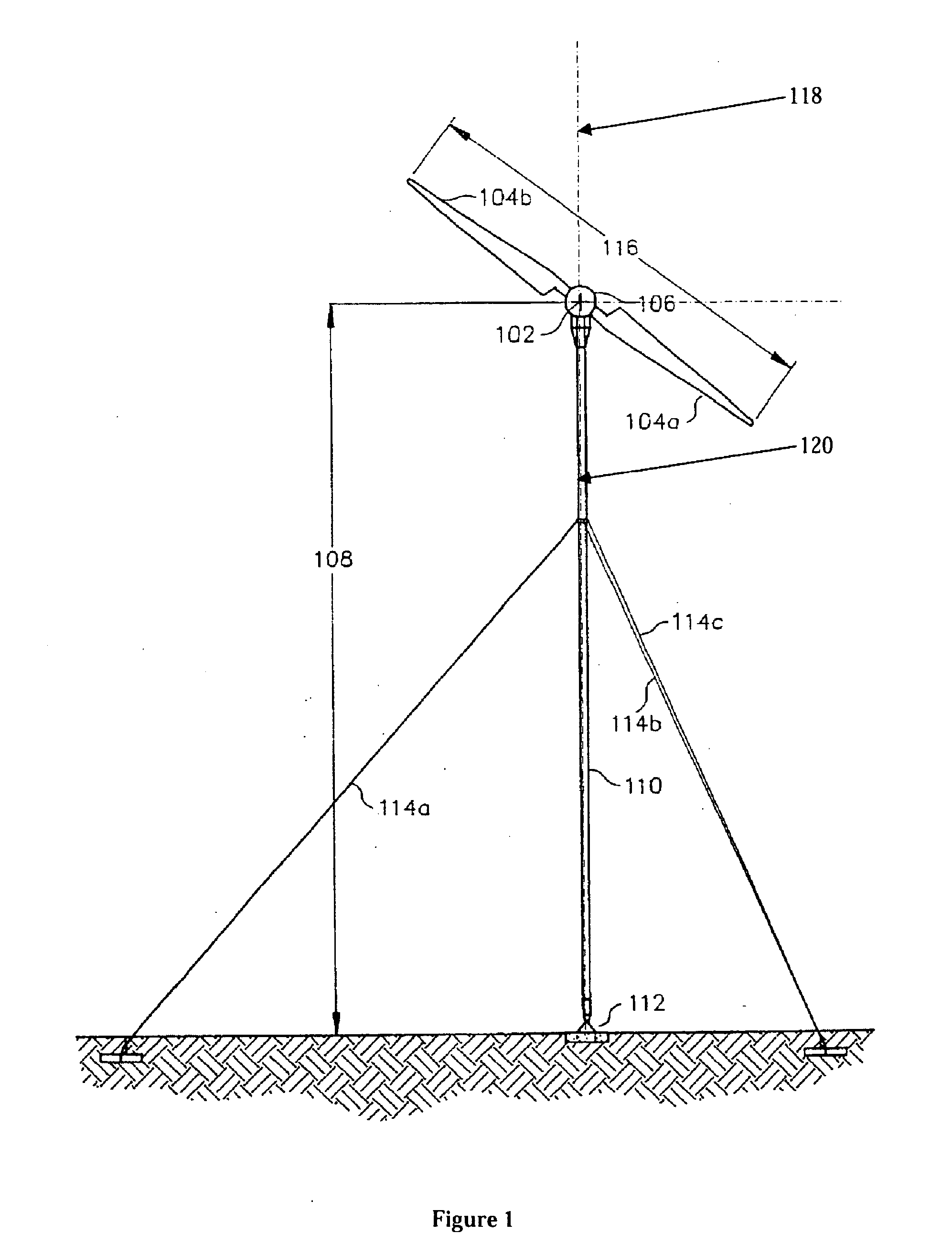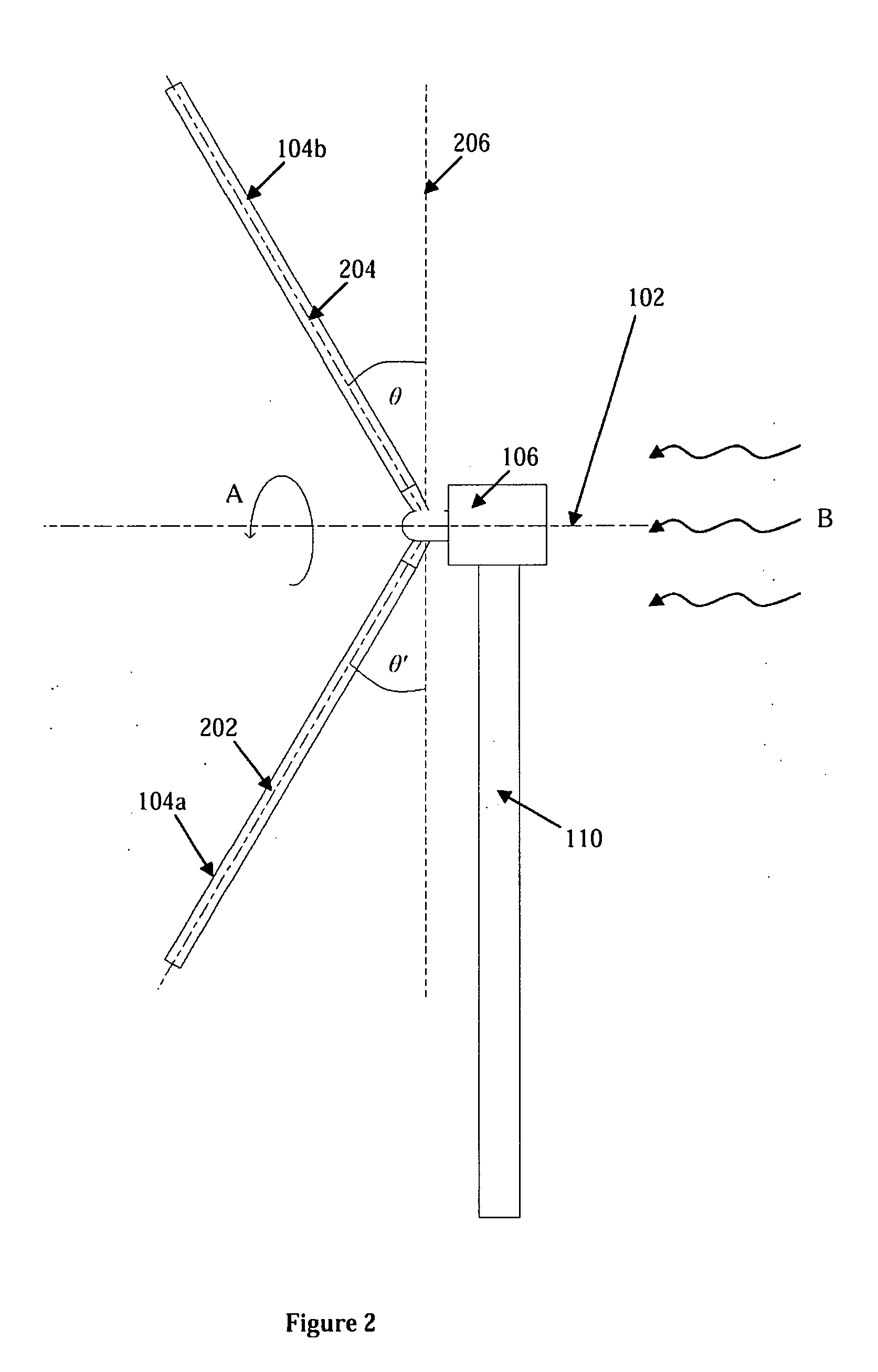Blade control system
a control system and blade technology, applied in the direction of machines/engines, mechanical equipment, transportation and packaging, etc., can solve the problems of yaw error, different forces acting on the rotor, and slow rotational speed of the rotor, so as to reduce the risk of a blade striking and minimize costs and maintenance
- Summary
- Abstract
- Description
- Claims
- Application Information
AI Technical Summary
Benefits of technology
Problems solved by technology
Method used
Image
Examples
Embodiment Construction
[0061]Referring now to the drawings 1-15, wherein similar parts of the invention are identified by like reference numerals, there is shown in FIG. 1, a wind turbine 100, which includes a plurality of blades 104a and 104b coupled to a hub 302 (see FIG. 3) located within a housing 106. The blades 104a and 104b are rotatable (e.g. together with the hub 302) about a rotational axis 102. A tower 110 supports the housing 106 at a height 108 about the ground. The height 108 should be greater than half the span length 116 of the blades 104a and 104b to avoid the blades from hitting the ground. The tower 110 has a base portion 112 that is connected to the ground. The tower 110 may have one or more guy wires 114a, 114b and 114c connecting the tower 110 to anchors on the ground to help secure and stabilize the tower 110 (e.g. when the wind turbine 100 is operating in high wind conditions).
[0062]FIG. 2 is a side view of the wind turbine 100 shown in FIG. 1. The blades 104a and 104b of the wind ...
PUM
 Login to View More
Login to View More Abstract
Description
Claims
Application Information
 Login to View More
Login to View More - R&D
- Intellectual Property
- Life Sciences
- Materials
- Tech Scout
- Unparalleled Data Quality
- Higher Quality Content
- 60% Fewer Hallucinations
Browse by: Latest US Patents, China's latest patents, Technical Efficacy Thesaurus, Application Domain, Technology Topic, Popular Technical Reports.
© 2025 PatSnap. All rights reserved.Legal|Privacy policy|Modern Slavery Act Transparency Statement|Sitemap|About US| Contact US: help@patsnap.com



